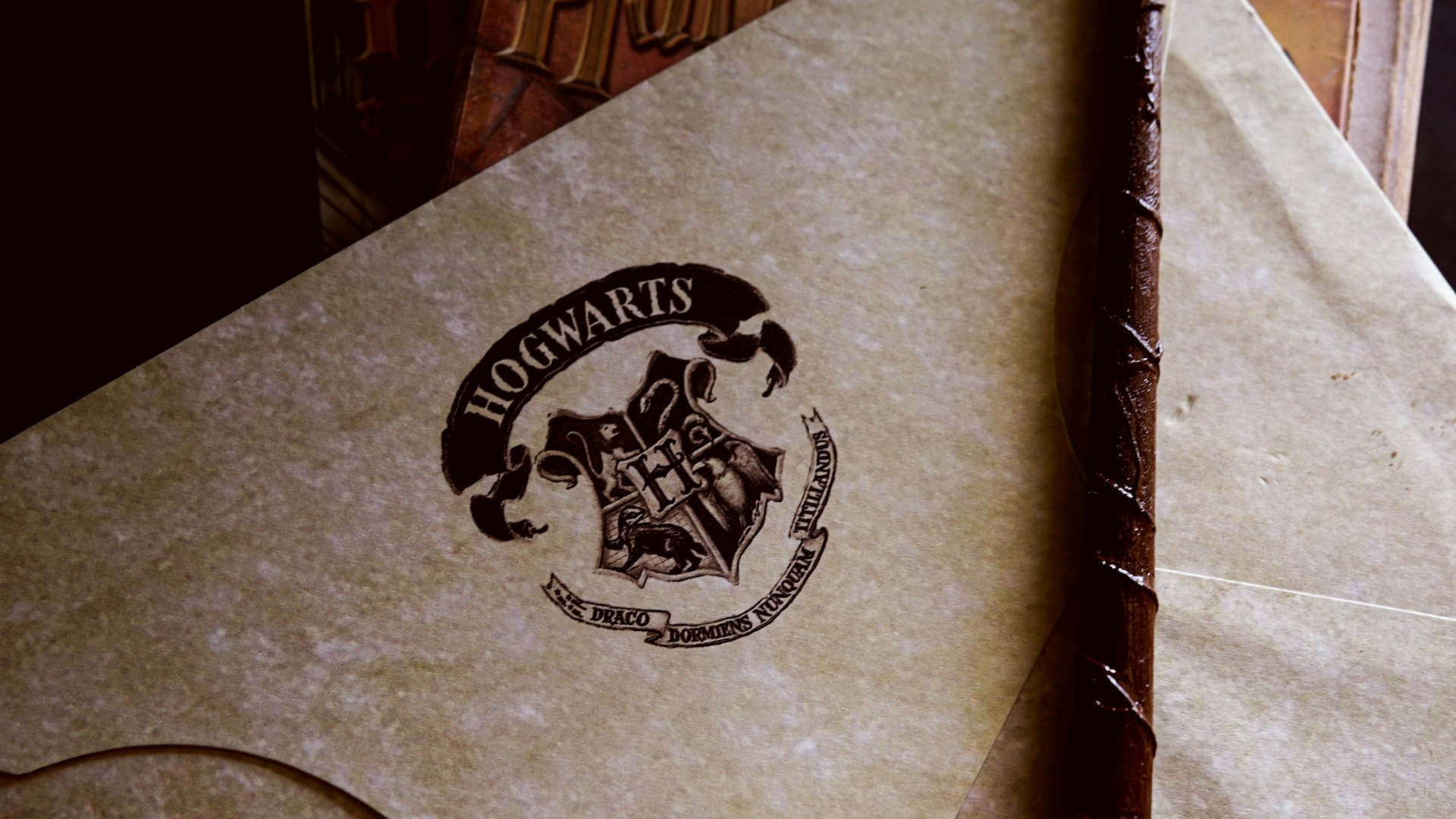Introduction to Hogwarts Houses
Hogwarts School of Witchcraft and Wizardry, as depicted in J.K. Rowling’s acclaimed series, is home to four distinct houses: Gryffindor, Hufflepuff, Ravenclaw, and Slytherin. Each house embodies unique values and traits that influence its members’ identities and experiences within the magical community. Upon entering Hogwarts, students undergo a sorting ceremony, where the iconic Sorting Hat determines their house affiliation based on their characteristics, aspirations, and attitudes.
The significance of house identity at Hogwarts cannot be overstated. It provides a framework within which students form their social circles and develop their magical abilities. The house system fosters a sense of belonging and friendship, often leading to lifelong connections between members. Furthermore, each house’s emblematic colors and animals play a crucial role in shaping the identity of its members and instilling pride in their house. Gryffindor, represented by the lion and marked by scarlet and gold, symbolizes bravery and courage. Hufflepuff, with its badger emblem and yellow and black colors, stands for loyalty and hard work. Ravenclaw, adorned with an eagle and blue and bronze hues, values intelligence and creativity, while Slytherin, represented by a serpent and characterized by green and silver, celebrates ambition and cunning.
Understanding the symbolism of these colors and animals offers deeper insight into the values each house upholds. For students and fans alike, these symbols serve as an essential part of their identity, enhancing the vibrant tapestry of life at Hogwarts. Moreover, the allegorical meanings tied to each house reflect broader themes of community, allegiance, and the unique qualities that shape character in the wizarding world. Recognizing these elements enables individuals to appreciate the motivations and backgrounds of those associated with each house, enriching their overall experience within the magical universe.
Hufflepuff: Yellow & Black
Hufflepuff, one of the four houses at Hogwarts School of Witchcraft and Wizardry, is renowned for its dedication to core values such as loyalty, hard work, and fair play. The house colors, yellow and black, symbolize attributes that resonate deeply within its members. Yellow, a color often linked to optimism and cheerfulness, embodies the positive outlook Hufflepuffs maintain even in challenging situations. Meanwhile, black signifies strength and resilience, reflecting the steadfast nature of Hufflepuff individuals who are known for their unwavering support of one another.
The combination of these colors serves not just as a visual representation but as an ethos for Hufflepuff members, influencing their interactions within the wizarding community. This house prides itself on creating an inclusive and supportive environment where collaboration and camaraderie thrive, fostering a sense of belonging among its members.
Accompanying these colors is the house animal, the badger, which further reinforces Hufflepuff’s core values. Badgers are often perceived as symbols of determination and tenacity. They remind Hufflepuff members of the importance of persistence in their pursuits, demonstrating that one can achieve greatness through consistent effort rather than only relying on innate talent or cleverness. This animal also represents community, as badgers are social creatures that dwell in groups known as cets, thus reinforcing the collective spirit found within Hufflepuff.
In summary, the meaning behind Hufflepuff’s colors and animal symbolism illustrates a house deeply committed to virtues of loyalty, hard work, and a sense of community. Members of Hufflepuff embody these traits, manifesting a spirit that prioritizes collaboration and support for one another, ultimately enriching the Hogwarts experience for all.
Ravenclaw: Blue & Bronze
Ravenclaw, one of the four distinguished houses at Hogwarts School of Witchcraft and Wizardry, is renowned for its unwavering emphasis on intelligence, creativity, and wisdom. Founded by Rowena Ravenclaw, this house attracts individuals who possess a profound thirst for knowledge and a commitment to academic excellence. The colors of Ravenclaw, blue and bronze, carry deep significance and reflect the ideals upheld by its members.
The blue hue symbolizes the vastness of the sky and is often associated with depth, inspiration, and intellect. Blue inspires calmness and focus, essential for scholarly pursuits. It encourages a reflective state of mind, enabling students to engage fully with their studies. On the other hand, bronze represents resilience, strength, and sharpness, highlighting the importance of mental agility in achieving success. The combination of blue and bronze serves as a powerful emblem, illustrating the core values of Ravenclaw house—intellectual prowess and creative expression.
At the heart of Ravenclaw’s symbolism is the eagle, a majestic creature known for its keen vision and agility. The eagle embodies traits of freedom, higher thinking, and the ability to soar above challenges. This magnificent bird represents members of the house who continually strive to elevate their minds and break free from the conventional limits of thought. In essence, the eagle aligns seamlessly with Ravenclaw’s principles, encouraging its students to embrace their innate curiosity and pursue knowledge fearlessly.
Members of Ravenclaw are often seen as innovative thinkers, thriving in environments that foster creativity and intellectual discourse. The house values not just academic success but also the application of knowledge in imaginative ways. Collectively, the blue and bronze colors, along with the eagle symbol, affirm that Ravenclaw is a sanctuary for those who seek wisdom and encourage each other in their quest for understanding and enlightenment.
Slytherin: Green & Silver
Slytherin House, one of the four houses at Hogwarts School of Witchcraft and Wizardry, is traditionally associated with qualities such as ambition, cunning, and resourcefulness. The distinctive colors of Slytherin—green and silver—carry significant meaning that reflects the values upheld by its members. Green symbolizes power, growth, and renewal, while silver is often linked to sophistication, elegance, and prestige. Together, these colors epitomize the traits that Slytherin encourages in its students, emphasizing both ambition and the pursuit of excellence.
The combination of green and silver in Slytherin’s identity serves to represent not only the strategic ambition of its members but also their desire for recognition and success. Ambitious individuals channel their skills and dedication towards achieving their goals, often navigating challenges with strategic thinking and resourcefulness. These attributes create a strong foundation for the house known for producing some of the wizarding world’s most influential figures, from powerful dark wizards to respected leaders.
The animal symbol of Slytherin, the serpent, further accentuates the house’s emblematic qualities. Serpents are often seen as cunning creatures capable of survival in various environments due to their adaptability. This multifaceted nature aligns with the Slytherin philosophy that values intelligence and the ability to manipulate situations to one’s advantage. The serpent also embodies transformation and duality, echoing the potential for growth and change inherent in every Slytherin. This connection highlights the dynamic nature of ambition, where success may involve navigating moral complexities.
Ultimately, the colors green and silver, alongside the serpent, create a vivid tapestry of what it means to belong to Slytherin. House members are characteristically driven and resilient, continually striving for greatness while exemplifying the virtues of cunning and strategic success.
Gryffindor: Red & Gold
Gryffindor, one of the four esteemed houses at Hogwarts School of Witchcraft and Wizardry, epitomizes qualities such as bravery, courage, and chivalry. The house colors, red and gold, are not mere aesthetic choices; they are emblematic of the values that Gryffindor champions. Red is often associated with passion, strength, and the vitality of life, while gold signifies wealth, warmth, and the pursuit of greatness. Together, these colors form a potent representation of valor and nobility, attributes that all Gryffindors strive to uphold.
The lion serves as the house’s animal mascot and is a powerful symbol of strength and leadership. This majestic creature, often depicted as the king of beasts, encapsulates the very essence of Gryffindor’s ethos. Lions are known for their courage in the wild, taking on challenges that may seem insurmountable, much like the Gryffindor students, who often face their own set of trials daunting in nature. The lion’s roar, akin to a rallying cry, instills a sense of fearlessness and determination, encouraging members of this house to act bravely when confronted with adversity.
Core values of Gryffindor extend beyond mere valor; they encompass a deep-seated commitment to justice, loyalty, and honor. These principles guide the actions of Gryffindor members, urging them to stand up for what is right and to support one another in times of need. The interplay of red and gold with the lion’s symbolism creates a rich tapestry of meaning that resonates deeply with those who identify with this house. It is this combination that not only defines Gryffindor’s identity but also inspires generations of witches and wizards to embrace the traits that elevate not just themselves, but the wider magical community.
Comparative Analysis of House Colors
Hogwarts School of Witchcraft and Wizardry is renowned not only for its magical education but also for the distinct identities embodied by its four houses: Gryffindor, Hufflepuff, Ravenclaw, and Slytherin. Each house is represented by its unique colors, which play a crucial role in shaping the identity of its members and evoking specific psychological and emotional responses. Understanding the symbolism behind these colors can provide insight into the traits and characteristics associated with each house.
Gryffindor is identified by the bold colors of red and gold. Red is traditionally associated with courage, passion, and energy, traits that are intrinsic to Gryffindor’s ethos of bravery and chivalry. This color instills a sense of adventure and inspires bold actions among its members, encouraging them to take heroic risks in the face of adversity. The accompanying gold reflects values of loyalty and illumination, symbolizing the house’s aspiration for greatness and heroism.
On the other hand, Hufflepuff’s colors, yellow and black, convey warmth and groundedness. Yellow is synonymous with optimism, kindness, and cheerfulness, reflecting the house’s emphasis on hard work and inclusivity. Members of Hufflepuff often embody these traits, contributing positively to their environment with their nurturing attitudes. Black, contrastingly, signifies strength and resilience, which, together with yellow, demonstrates a balanced approach to unity and determination.
Ravenclaw’s blue and bronze colors evoke intelligence, wisdom, and creativity. Blue is often linked to tranquility and confidence, nurturing a serene environment for learning and discovery. This atmosphere fosters a spirit of inquiry that is essential for the inquisitive minds of its members. Bronze adds a touch of antiquity, linking the house to knowledge through the ages and symbolizing the importance of history in shaping future wisdom.
Lastly, Slytherin’s green and silver combination indicates ambition and cunning. Green symbolizes growth, rejuvenation, and resourcefulness, characteristics that reflect Slytherin’s strategic and ambitious nature. The silver complements this by representing aspiration and success, showcasing the house’s desire to achieve great things through calculated risks and ingenuity. Each house color thus not only represents the identity of the house but also influences the behavior and self-perception of its members.
Animal Symbolism in the Hogwarts Houses
In the enchanting world of Hogwarts, each house is represented by a distinct animal mascot, each carrying rich symbolism that reflects the values and characteristics celebrated within that particular house. The four houses—Hufflepuff, Ravenclaw, Slytherin, and Gryffindor—not only boast unique colors but also embody the essence of their animal representations, drawing from a wealth of folklore and mythology.
The badger, emblematic of Hufflepuff, is often associated with hard work, loyalty, and perseverance. In many cultures, badgers are seen as tenacious creatures that thrive in their environment through diligence and a strong sense of community. This connection to the traits of Hufflepuff members underscores the importance of dedication and support within the house.
On the other hand, the eagle symbolizes Ravenclaw, reflecting intelligence, wisdom, and keen insight. Eagles are revered as remarkable creatures in various mythologies, often representing a higher perspective and clarity of vision. This aligns well with Ravenclaw’s emphasis on knowledge and scholarly pursuits, reinforcing the idea that wisdom is an essential component of achieving true greatness.
Slytherin’s emblematic serpent carries its own significance, embodying cunning, ambition, and resourcefulness. In folklore, serpents are frequently associated with transformation and rebirth, suggesting that Slytherins are adept at navigating challenges and seeking opportunities for advancement. This animal’s symbolism highlights the house’s encouragement of strategic thinking and the pursuit of personal goals.
Finally, Gryffindor’s lion stands as a potent symbol of bravery, courage, and strength. Lions are often referred to as the kings of the jungle, representing leadership and valor. This connection resonates strongly with Gryffindor’s core values, inspiring its members to courageously face adversity and champion those in need.
Ultimately, the animal mascots of the Hogwarts houses serve as powerful symbols, reflecting the foundational traits of each house and influencing the identities of their members. By understanding the deep-rooted meanings behind these creatures, one can gain greater insight into the significance of house allegiance and the values that shape the lives of Hogwarts students.
Personal Reflection on House Identity
Reflecting on one’s Hogwarts house offers a profound opportunity for self-discovery and personal growth. Each house—Gryffindor, Hufflepuff, Ravenclaw, or Slytherin—represents a unique set of values and traits that resonate differently with individuals. The vibrant colors and distinct animal symbols associated with each house serve as metaphors for various aspects of our personalities, experiences, and aspirations. By taking a moment to contemplate which house one belongs to, it becomes more apparent how these traits influence our daily lives.
For instance, Gryffindors are often characterized by their bravery and determination. If one finds themselves drawn to this house, they may possess a tendency to take bold risks or stand up for what they believe in, reflecting a desire for heroism and courage. Conversely, Hufflepuffs value loyalty and hard work, suggesting that individuals who resonate with this house may prioritize friendships and teamwork in their lives, emphasizing the importance of community and collaboration.
Ravenclaw individuals often embody intelligence and a quest for knowledge, indicating that a connection to this house could signify a thirst for learning and critical thinking. Finally, Slytherins are known for their ambition and resourcefulness, attracting those who aspire to achieve and overcome challenges, often showcasing a strategic approach to life.
As you consider your own Hogwarts house, take note of the symbols and colors that hold significant meaning to you. Reflect on the ways these align with your personal goals and experiences. This process of introspection may facilitate a deeper understanding of how the identity of your house aligns with your life’s narrative, ultimately enhancing your daily choices and life direction. Embracing the lessons and values from your house can lead to greater self-awareness and a more meaningful existence.
Closing Thoughts
In the enchanting world of Hogwarts, every house is distinguished not only by its vibrant colors but also by its unique animal symbols, each carrying significant meaning. Ravenclaw, with its blue and bronze hues, symbolizes wisdom and intelligence, embodied by the eagle. Gryffindor’s bold red and gold, represented by the lion, captures bravery and courage. Meanwhile, Slytherin’s green and silver, highlighted by the serpent, signifies ambition and cunning, while Hufflepuff’s yellow and black reflects loyalty and hard work, represented by the badger. Understanding the significance of these colors and animals enhances our connection to the Hogwarts experience and allows us to appreciate the diverse traits that comprise our identities.
Moreover, each house celebrates a distinct set of values that contribute to the richness of Hogwarts culture. The symbolism associated with house colors and animals extends beyond mere identification; it serves as a reminder of the strengths and qualities we can harness in our own lives. By embracing these symbols, individuals can foster a sense of belonging and community, connecting with fellow house members who share similar values and ideals.
As you reflect on your own house identity, consider how these elements resonate with your personal characteristics. Which qualities do you see in yourself that align with your house’s symbolism? Whether you draw confidence from the bravery of Gryffindor or the loyalty of Hufflepuff, embracing your house will undoubtedly enrich your journey through life. We encourage you to celebrate your identity and share your thoughts and experiences related to your house colors and animal symbolism. What do these elements mean to you? Your reflections contribute to the ongoing narrative of Hogwarts, fostering a deeper appreciation for the diversity inherent in the magical community.

We share information about current trends and stories of people all around the world.



